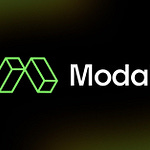I remember that around 2013, everyone was talking about “CRM 2.0” — what CRM company would displace Salesforce? SFDC was clunky. Implementation took forever. And it never really ended. It seemed like only a matter of time before SFDC would be forced to pass the torch to a hot new CRM company.
As it turns out, SFDC is here to stay. They’ve been an incredibly successful company. When you go to hire your first VP of Sales, they’ll very likely tell you that SFDC is their tool of choice.
But people still love to complain about SFDC. They’ve been successful in spite of the continued cost of implementation and maintenance. So how can you use SFDC but reduce the cost of ownership?
In this post, Taylor Lint, the CEO and Founder at Swantide, shares the best practices for setting up and maintaining your CRM. We discussed:
How should you set up your CRM early on so that you don’t accumulate a ton of tech debt?
What are the costs of switching to a new CRM as you grow?
How can you automate future changes to your CRM, so that you’re not spending a ton of money on admins and contractors?
You can listen to the podcast or else read the lightly edited transcript of the conversation below. Let's dive in!
Leadership Roles
Here are a few leadership roles at companies that I’m excited about.
Arketa: Head of Demand Gen
Bubble:
Explo: Head of Marketing
Fairmarkit: Team Lead, Data Engineering
Jasper: Lots of roles across customer success, engineering, marketing, sales!
LaunchNotes: Director of Engineering (video here)
Parallax:
Pocus: Customer Success, Biz Ops, Demand Gen, and other roles here
Trunk Tools: VP Engineering
Transcript
Allison: Taylor, I am so excited to have you on the podcast today to talk about setting up your go-to-market stack, which I know is going to be a topic of interest for a lot of folks in the audience. Particularly, we have a strong operations contingent in the audience and also a lot of go-to-market leaders. So thank you so much for joining to share your insights.
Taylor: I'm excited to be here. We think about this every single day, so excited to share with folks what we've learned and what we're seeing out in the market.
A: Could you start by giving us a lay of the land of what your go-to-market stack should look like nowadays?
T: I think it's changed a lot in the last few years. One of the biggest things is the centralization of all of your data in the data warehouse and go-to-market teams moving to have that as a single source of truth, in addition to all the tools that they've been using for a long time. And your sales team using a CRM like Salesforce or any of the other CRMs that are on the market, your marketing team has a marketing automation platform, your CS team is living out of something like Zendesk or Intercom. And then there's a bunch of other tools that have point solutions, like outbound outreach, that your sales team might be using, or lead routing or data cleaning for any of these tools. We've seen a lot of customers buying point solutions for leveraging AI for sales teams or for product-led growth. You'll see teams as early as a seed or series A company have five or 10 tools, and then it continues to grow from there. Managing the go-to-market tech stack has become increasingly complicated because these tools now all talk to each other as well. Whereas 10 years ago, your sales and marketing team were both using tools, but they may not have integrated with each other, and you didn't have data management problems across them like you do now.
A: What would you say is the role of the CRM now in your go-to-market stack, and how does that compare with how it was five or 10 years ago?
T: For a long time, people said, “Salesforce is the source of truth,” and that's still true. It is the source of truth, but it's the source of truth for the actions that your sales team are taking, and it's not the source of truth for everything in your go-to-market tech stack. So what we like to tell customers is, think about the tool that you're buying, whether it's Salesforce or HubSpot or Marketo, and think about what that tool is really good at — that's what your team should use it for. They shouldn't use it for everything. Don't try to make every tool do everything and put all of the data everywhere, because that's when it becomes really, really hard to manage. So if you have the single source of truth being your data warehouse, then you can choose which data the sales team needs and push that into Salesforce. Then the sales team can use Salesforce to keep track of everything that they're doing offline, or fill out information about their opportunities, move deals through the pipeline, and get product or marketing data pushed into Salesforce. But not all of the data.
A: Makes a lot of sense. It's really interesting to hear your perspective on particularly how the data warehouse as the source of truth has changed the role of the CRM, which as you mentioned, used to be considered the source of truth. I think people have given up on that ultimate vision, even though CRM is still critical part of the stack.
T: Yes. We've talked to rev ops leaders about how 10 years ago, when companies were first starting to push product data into Salesforce, they were pushing everything in there. They were trying to have their sales teams have a realtime view of data that was coming in. It was too hard to manage, it came with additional costs, and at the end of the day, the sales team doesn't need or really care about that real-time product data. You have another tool to look at product data. What they need is a snapshot and a summary of the account, or they need those product qualified leads coming into Salesforce the same way they need marketing qualified leads coming into Salesforce. But they don't need to be able to drill down and see every single action that every user has taken in your account in Salesforce.
A: Filtering out that unnecessary information probably makes their job easier, because it helps them focus on the data that actually matters to their job.
T: Exactly. And then they actually use it rather than saying, "This is really slow to load in Salesforce. I'm not going to even look at this tab or page because it's too overwhelming." You can just say, "Okay, if you have a usage based model, what has this company been spending the last few months?" Just give the snapshot or summary.
A: What are you noticing in terms of what brand of CRM companies are buying nowadays, and how does that vary depending on the size of the company and other factors?
T: Right now we work just with Salesforce. We're going to start supporting HubSpot later this year. We see a lot of early stage companies start on something other than Salesforce. A lot start on HubSpot because it's really easy to get started. It's a great tool. Then there are a lot of CRMs that are very vertical focused, but we oftentimes see people switch to Salesforce.
At the series A or series B stage, all roads lead to Salesforce. You hire a head of sales and oftentimes the first thing they say is, "We need to set up Salesforce because it's going to be painful if we wait any longer."
There are a couple other forcing functions that we see. One of them is about integrations: if you have any of these other tools your sales team likes to use, or you want to leverage any newer tools on the market, some of them don't even integrate with HubSpot. Their first integration is with Salesforce. So, that can be a forcing function for people to get on Salesforce too.
A: It's really interesting to hear about how entrenched Salesforce is among mid-stage companies and above. In general, Salesforce feels so ubiquitous. I'm the first to admit that I’m surprised by that, because back when I was working at Gainsight, there were all sorts of thoughts about Salesforce's usability and what's going to be the CRM 2.0? But the reality is that Salesforce has evolved really well to keep up with customers’ needs. Their product has improved a lot. What have you noticed in terms of the relevance of Salesforce nowadays?
T: What drew me to this space was, everyone complains about Salesforce. You talk to sales leaders, marketing leaders, reps, sales ops, rev ops: Everybody wants to complain about Salesforce, but it's not a bad tool. It's a great tool, and it can do so many things. It's just hard to manage. And of course, it's hard to manage because you're trying to capture in this tool all of your complex processes that happen offline. Obviously, there are things that every tool can do better, and there are things that Salesforce could do better, but your CRM has to be complex, just like ERP systems are complex. And what's difficult about it is managing it and translating those offline processes into tools.
A: Now, I know you said that at some point, when you hire a sales leader, they're going to want to transition to Salesforce. That I imagine can be a painful process for a lot of companies. What have you noticed in terms of the switching costs involved in that?
T: Historically, it often is a really painful process, and there are a couple reasons that it's painful. One, the initial setup of Salesforce itself is complicated. It doesn't work out of the box: you have to invest in setting it up. We’ve seen early-stage companies take on a couple of attitudes. If it's a head of sales that's done it before, they'll say, “I know I have to do this. I'm either going to pay a consultant, or we can use Swantide instead." Sometimes founders, especially technical founders, will say, "Of course I can set this up, I'm an engineer." And then they realize that it's pretty complicated to set it up: you need to know what you're doing, and you have to learn how to use the tool in order to set it up.
There's set-up, then there's ongoing management, and then there's the administrative tasks related to Salesforce. The ongoing management is really the same as set up. Any time your sales process is changing, you have to change your CRM to capture those changes in your offline process. If you're a fast growing company, you're probably changing your process quite often. Or if you're experimenting at all with your sales process, then you have to make those changes in your Salesforce.
What we've seen with the old model of managing Salesforce, where you have a consultant on retainer, is that there's a lot of lag time after you want to make a change. We like to tell people that thinking about it as set up, as a one and done activity — that's really not true. You're never done setting up Salesforce. No company is done setting up Salesforce. You're always managing it.
The admin tasks involve giving permissions; handling many integrations; folks are often uploading data a lot. All this can be quite painful. And then managing the data that's actually in your Salesforce. If you have information coming in from the internet, where anyone can fill out a form on your website and it's coming into your CRM, then you're going to have messy data. So you have to have either tools or processes in place to keep that data clean.
A: Now, I know you have a strong perspective on what should be done about these challenges. I know you're a humble person and you're not going to be the first person to brag about what your company does, but I'd love to just hear your thoughts. What are the best practices for tackling these common struggles? And you could talk a little bit about what your product does and how it might help.
T: Swantide is automating the management of the go-to-market tech stack. We're starting with Salesforce. We spent the first year of the company trying to understand, what are people at B2B SaaS companies doing in Salesforce, and what are they setting up? What's the functionality they need, and why is it so painful? Why as a series B, series C company are you spending six or sometimes seven figures on your CRM management? Or why are you throwing it away and starting over with just a blank slate? Many people are not getting ROI on their investment in their CRM.
As we looked into it, what we realized was that a lot of the issues come from thinking about the setup as a one-and-done activity, and from not investing in getting the foundation and the data model right. A lot of companies are trying to do the same thing: there are only so many different ways you can run a sales team for a B2B SaaS company. You might not have outbound right now, or you might not have any inbound right now, but you want to be able to turn on that functionality when your sales team wants to change in that way.
So, we've built a product that allows us to configure your Salesforce for all of the different ways B2B sales teams want to run, using the Salesforce API. We deploy these metadata and settings changes into your Salesforce — you deploy them yourself actually — from the Swantide app, so that when you make a change to your sales process, you can have it in Salesforce basically instantly.
The other thing we've done is think about the fact that these are fast-growing companies that are going to want to make changes. You might not care about how long opportunities are progressing through the pipeline right now, but when you bring in a head of sales or a CRO in six months, they're going to care about that and will want to see the data. So, you’ll want to make sure that you have tracking turned on in the background, so that you can pull those metrics and have that historical view. We provide a lot of best practices with these configurations, as well as knowing what you're going to need in 6, 12, 18 months.
A: That's amazing. So, if I'm trying to replicate Airtable sales team's model, is that the kind of thing that I might be able to download?
T: Exactly. That's where we want to be long term: "I'm this type of company, we're selling a horizontal tool, and it's primarily product-led growth. How have other companies configured their Salesforce? Give me that playbook and put it instantly in my Salesforce.”
A: Have you been able to quantify the cost reduction that you're able to create for your customers as a result of this kind of automation?
T: We have some customers where it's saving them 10 hours a week of time from a consultant or an admin that, for whatever reason, didn't work out. They switched to Swantide and they saw that time savings. 40 hours per month is a lot of time. We also automate some of the tedious, administrative stuff, which people don't want to be doing anyway. Have you ever uploaded data into Salesforce? It’s super painful.
A: You automate these basic tasks that tons of teams around the world have to do.
T: Exactly.
A: I know you have some thoughts on the timing of when people should be investing in their tech stack for go-to-market: what types of investments they should make, when. Can you walk us through, from the early days, what should startups be doing?
T: If you have the budget, starting out with Salesforce can make a lot of sense because you will end up there. Inevitably, you will hire a CRO who says, "We're going to do this." And so it's just a matter of how long you want to wait and how painful the transition is. I think that the pain around the transition is due to not just the amount of data, but also due to any technical debt that could have been acquired by using that other tool as not just a CRM. You might be using your CRM for some marketing or product emails, or something else that the CRM wasn’t intended to be used for. Then if you switch to Salesforce, you also have to figure out what to do with those other processes that you had embedded in your old CRM. That's a really painful transition.
A: Any other mistakes you've seen teams make that you would advise them against?
T: Make sure that you're able to have recurring revenue on your opportunities and multiple products on your opportunities. When you’re starting out, it might just seem like, “We're just selling our platform and we're going to sell it for 10K a year on an annual contract." But then as soon as you want to start having per seat pricing, or you have another tier, now all of the sudden, you have a big change that you need to make in Salesforce. You've got to change all of the historical data if you want to keep using the same reports at dashboards. And it's now quite a big headache, and your product or finance or your founder is like, we need to do this ASAP.
Turn on settings in Salesforce for better managing teams. As you hire, maybe you start with AEs, then you start hiring SDRs and sales engineers. People unfortunately sometimes create a field for each of those on the account and the opportunity rather than using the reporting structure that Salesforce has to allow multiple team members to be associated with it.
If you were an engineer designing that database, you wouldn't make these mistakes, because it makes it much harder to pull out the data and use it in different ways down the line.
These are small early mistakes that create a lot of hassle later on.
A: I love getting into the nitty gritty of what people have to do in order to get this right in terms of setting up their go-to-market stack. Let's say that I'm running a PLG company, I've operated entirely through self-serve up until this point, I have maybe a couple million in revenue and I want to layer on a top down selling motion, maybe like taking PQLs and converting them into corporate level contracts. What are a few things that are must-haves in terms of what I build into my CRM and my go-to-market tech stack?
T: In our market research, we talked to a ton of rev ops and Salesforce admins at companies like LinkedIn, Dropbox and Stripe, about how they shot themselves in the foot when they first set up their CRMs to support product led growth. What you really want to make sure you get right from the very, very beginning is having a separation between those product signups and your account leads and contacts in Salesforce. We help with this. Let’s say you're selling a product to LinkedIn, for example. If five different teams at LinkedIn sign up, you’ll have five different instances, but still one LinkedIn account in your Salesforce.
This is really, really important as you start to grow and you want to be able to create territories, or if you want a rep to be able to tell LinkedIn, "Hey, you've got five teams with different accounts. Let's roll you up to an enterprise plan."
It’s important to see all of that in Salesforce and keep that data clean, so that when you do want to have an enterprise motion, you don't have a huge amount of data cleanup to do.
A: Taylor, any final tips for rev ops folks who are looking to make a big impact on their go-to-market tech stack?
T: Just like in engineering, any decision that you make now, you're going to be living with for a while. You have the same kind of technical debt that you have in an engineering tech stack. It's very hard to make changes once there's data and end users. Be really thoughtful about the decisions that you make at the earliest stages.
A: Great note to end on. Thank you so much, Taylor, for joining us today.
T: Thanks for having me!









